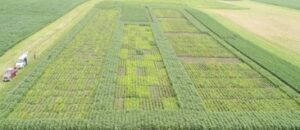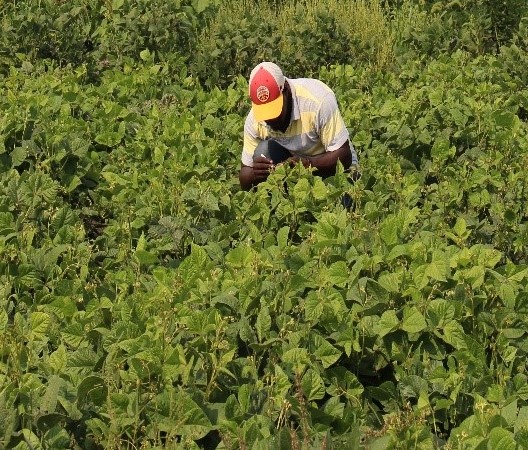Improved and practical crop breeding tools are required to meet the increasing demands of a growing global population and to overcome the sudden and variable stresses, made worse, by climate change. This project brings together researchers from the University of Hawai’i at Manoa and Iowa State University to develop an efficient, robust genome engineering toolkit that can be used to speed the generation of resilient crops adapted to a changing environment. Reproductive barriers are a major bottleneck that limits the genetic diversity available for crop improvement. Tropical maize germplasm is a rich source of genetic diversity but its flowering behavior in temperate regions precludes its broad use for maize improvement. To access this diversity, our two institutions formed a collaboration that integrates our strengths in tropical plant biology and transformation (Hawai’i) with maize transformation, genome engineering, and breeding (Iowa). Our goals are to establish a rapid and efficient genetic transformation platform and to develop improved genome editing tools to reprogram the flowering behavior of high-yielding tropical maize lines allowing their incorporation into any maize breeding program. Both Hawai’i and Iowa will gain a valuable new capability in genetic transformation and genome engineering which will transform the types of crop research possible at both institutions. Expected impacts from this project will help address food security and economic weaknesses in Hawai’i, by allowing for the development of new tropical crop breeding industries. In Iowa, access to gene-edited temperate-adapted tropical germplasm will move maize improvement into the next era of genome-optimized breeding. Workforce capacity will be increased by engaging underrepresented students, particularly Native Hawai’ians and Pacific Islanders, in diverse aspects of genome engineering research, by the exchange of undergraduates between partner institutions to prepare a globally competitive, multiculturally, and socially responsible workforce, and by creating opportunities for improved science communication skills through training sessions, workshops, and engagement with the community to communicate the value and safety of these new tools.
Critical to our future is maintaining the rate of genetic improvement of the crops that feed us and sustain our economy. But the sudden and increasingly severe stresses caused by climate change limit the pace of improvement. Advances in genome engineering offer rapid solutions by enabling precise and targeted reprogramming of molecular networks to improve crop performance. The rich genetic diversity in tropical maize is largely underutilized for maize improvement because tropical lines are photoperiod sensitive and flower late in the long-days of temperate growing regions. To access this diversity, we formed a collaboration between the University of Hawai’i at Manoa (UH Manoa) and Iowa State University (ISU), which integrates strengths in tropical plant system biology and transformation (UH Manoa) with maize transformation, genome engineering, and breeding (ISU). Our goal is to use gene editing to suppress the photoperiod response in elite, high-yielding tropical maize to promote earlier flowering. These edited tropical lines can then be used to enhance any maize breeding program. Our objectives are to (1) establish an efficient, germplasm-independent maize transformation platform, (2) develop a facile, tractable genome editing toolkit to suppress the photoperiod response in six tropical inbreds, (3) analyze photoperiod network function in genome edited tropical lines, and (4) improve skills in communicating the value and safety of these new genome engineering tools.
The outcomes from this project include new tropical maize transformation capabilities at both jurisdictions, genome editing reagents for modulating flowering in maize, six elite tropical inbreds adapted to temperate breeding programs, a mechanistic understanding of the response to reprogramming the flowering network, and improved skills to communicate the value of this technology in professional and public contexts. Broader impacts expected from this project include opening this technology to academic labs, that can build research capacity by allowing genome engineering of diverse crops. Democratizing these tools are expected to speed breeding advancements, sustain crop improvement efforts, and spur economic growth. Both Hawai’i and Iowa will gain a valuable new capability in maize transformation and genome engineering, and will transform the types of crop research possible at both institutions. In Hawai’i, this project will help address food security and economic weaknesses revealed by the pandemic, by allowing for development of new tropical crop breeding industries. In Iowa, access to gene-edited temperate-adapted tropical germplasm moves maize improvement into the next era of genome-optimized breeding. Workforce capacity will be increased by engaging underrepresented students, particularly Native Hawai’ians and Pacific Islanders, in diverse aspects of genome engineering research, by the exchange of undergraduates between partner institutions to prepare a globally competitive, multiculturally, and socially responsible workforce, and by creating opportunities for improved science communication skills through training sessions, workshops, and engagement with the community to communicate the value and safety of these new tools.



